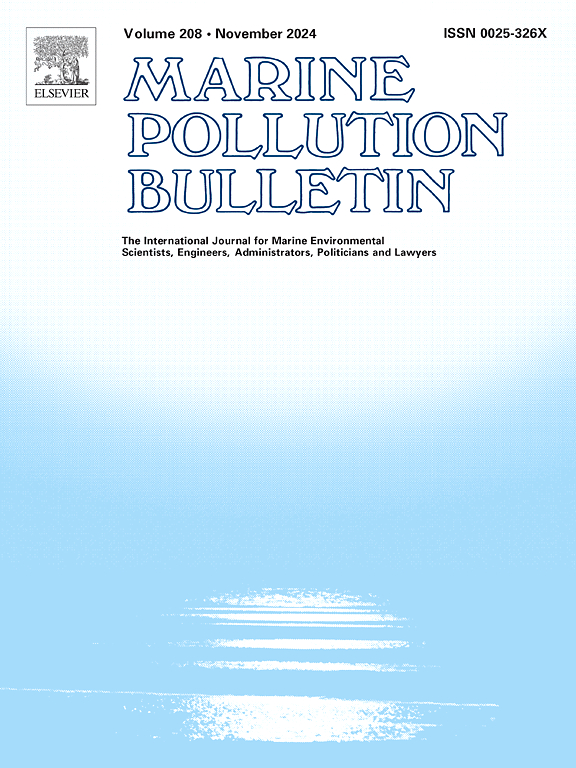Comparison between ballast water sampling skid and traditional ballast water sampling devices: A case study of ship sampling
IF 5.3
3区 环境科学与生态学
Q1 ENVIRONMENTAL SCIENCES
引用次数: 0
Abstract
With the ratification of the International Convention for the Control and Management of Ships' Ballast Water and Sediments in 2004, assessing the compliance of ships with ballast water discharge standards has become imperative. To facilitate this task, a sampling skid was developed to collect ballast water samples efficiently in the confined space of a ship. This study compared the sampling performance of the sampling skid, conventional ballast water sampling devices (e.g., manholes and sounding pipes), and sampling devices for ballast water discharge pipelines (zooplankton nets) over three biological size ranges: ≥50 μm, ≥10 μm to <50 μm and <10 μm. The results showed no significant differences between the sampling skid and other sampling devices in these size ranges. When continuous sampling was performed, biological data obtained by the sampling skid were more stable than those obtained by conventional ballast water sampling devices. Furthermore, the utilization of a sampling skid ensured a stable sampling flow rate and reduced sampling time compared to similar sampling methods. The potential impact of the performance of this sampling equipment on different vessel types and sampling environments should be explored more thoroughly in future work.
压载水取样橇与传统压载水取样装置的比较:船舶取样案例研究
随着 2004 年《控制和管理船舶压载水和沉积物国际公约》的批准,评估船舶是否符合压载水排放标准已成为当务之急。为了便于执行这项任务,我们开发了一种采样撬,以便在船舶的狭小空间内有效采集压舱水样本。这项研究比较了采样撬、传统压载水采样装置(如沙井和探测管)和压载水排放管道采样装置(浮游动物网)在三个生物尺寸范围内的采样性能:≥50 μm、≥10 μm 至 50 μm 和 10 μm。结果表明,在这些粒度范围内,采样撬与其他采样装置之间没有明显差异。在连续采样时,采样撬获得的生物数据比传统压载水采样装置获得的数据更稳定。此外,与类似的取样方法相比,使用取样撬可确保稳定的取样流速并缩短取样时间。这种取样设备的性能对不同船只类型和取样环境的潜在影响,应在今后的工作中进行更深入的探讨。
本文章由计算机程序翻译,如有差异,请以英文原文为准。
求助全文
约1分钟内获得全文
求助全文
来源期刊

Marine pollution bulletin
环境科学-海洋与淡水生物学
CiteScore
10.20
自引率
15.50%
发文量
1077
审稿时长
68 days
期刊介绍:
Marine Pollution Bulletin is concerned with the rational use of maritime and marine resources in estuaries, the seas and oceans, as well as with documenting marine pollution and introducing new forms of measurement and analysis. A wide range of topics are discussed as news, comment, reviews and research reports, not only on effluent disposal and pollution control, but also on the management, economic aspects and protection of the marine environment in general.
 求助内容:
求助内容: 应助结果提醒方式:
应助结果提醒方式:


